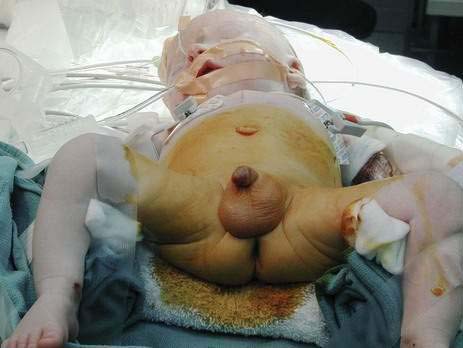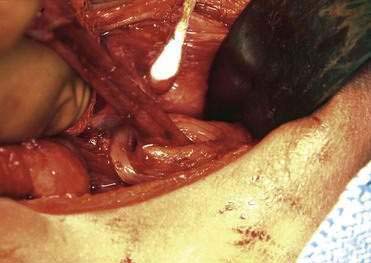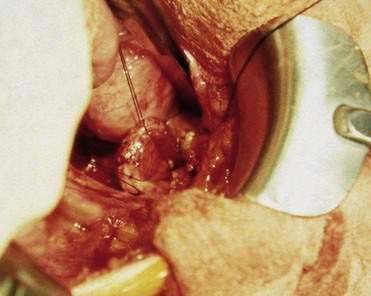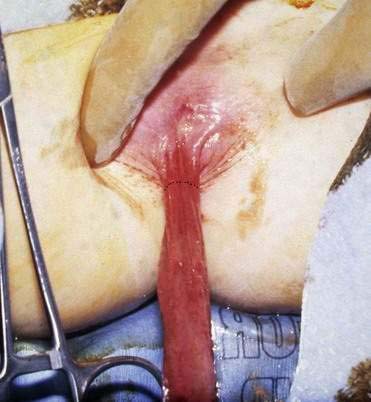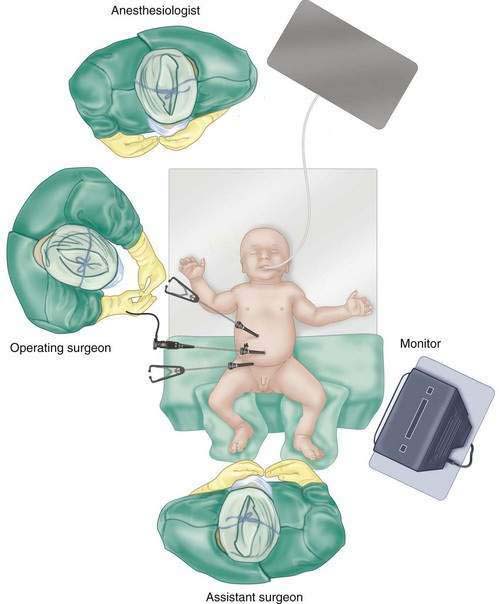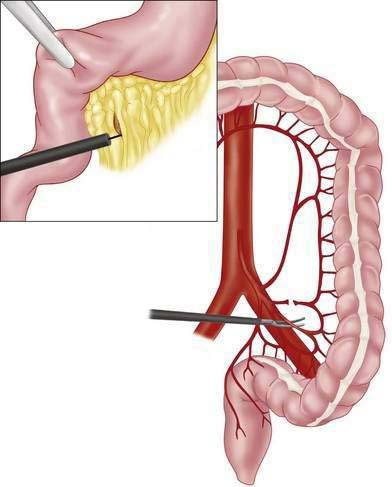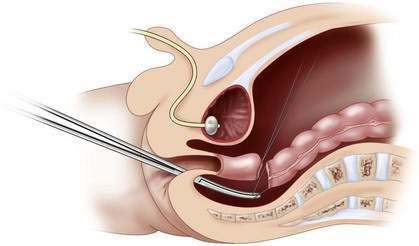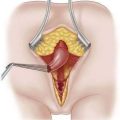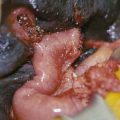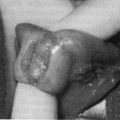CHAPTER 19 Hirschsprung Disease
Soave (Open and Laparoscopic-Assisted) and Duhamel Techniques
Open Endorectal (Soave) Pull-Through
Step 1: Surgical Anatomy
 Underlying the normal mucosa is a submucosal layer, which includes a muscular layer and accompanying submucosal (Meissner) plexus; deep to this is yet another muscular layer with its accompanying myenteric (Auerbach) plexus.
Underlying the normal mucosa is a submucosal layer, which includes a muscular layer and accompanying submucosal (Meissner) plexus; deep to this is yet another muscular layer with its accompanying myenteric (Auerbach) plexus. In Hirschsprung disease, the ganglia in both the submucosal and myenteric plexuses are absent for some length proximal to the dentate line.
In Hirschsprung disease, the ganglia in both the submucosal and myenteric plexuses are absent for some length proximal to the dentate line. The exact relation of the dentate line to the most distal extent of the aganglionic segment was initially characterized by Aldridge and Campbell in 1968. They defined a “hypoganglionic segment” in which ganglia were sparse, but still present, that extended, on average, for about 0.5 cm cranial to the dentate line. Indeed, the length of this segment was determined for each layer of the neural plexus, from an average of 4 mm for the myenteric plexus, 7 mm for the deep mucous plexus, and 10 mm for the superficial mucous plexus.
The exact relation of the dentate line to the most distal extent of the aganglionic segment was initially characterized by Aldridge and Campbell in 1968. They defined a “hypoganglionic segment” in which ganglia were sparse, but still present, that extended, on average, for about 0.5 cm cranial to the dentate line. Indeed, the length of this segment was determined for each layer of the neural plexus, from an average of 4 mm for the myenteric plexus, 7 mm for the deep mucous plexus, and 10 mm for the superficial mucous plexus.Step 2: Preoperative Considerations
Step 3: Operative Steps
Positioning and Preparation
Leveling
Endorectal Dissection
Pull-Through
Anastomosis
Step 4: Postoperative Care
Step 5: Pearls and Pitfalls
Laparoscopic-Assisted Endorectal (Soave) Pull-Through
Step 2: Preoperative Considerations
Step 3: Operative Steps
Leveling
Dissection
Step 5: Pearls and Pitfalls
Duhamel Pull-Through
Step 1: Surgical Anatomy
Step 2: Preoperative Considerations
Step 3: Operative Steps
Leveling
Retrorectal Dissection
Pull-Through
Anastomosis
Aldridge RT, Campbell PE. Ganglion cell distribution in the normal rectum and anal canal: a basis for the diagnosis of Hirschsprung’s disease by anorectal biopsy. J Pediatr Surg. 1968;3:475-490.
Teitelbaum DH, Coran AG. Hirschsprung disease, operations. In: Spitz L, Coran AG, editors. Operative pediatric surgery. 6th ed. London: Hodder Headline Group; 2006:553-563.
Teitelbaum DH, Coran AG. Hirschsprung’s disease and related neuromuscular disorders of the intestine. In: Grosfeld JL, O’Neil JA, Fonkalsrud EW, Coran AG, editors. Pediatric surgery. 6th ed. Philadelphia: Mosby Elsevier; 2006:1514-1547.


